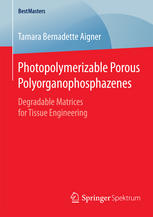

Most ebook files are in PDF format, so you can easily read them using various software such as Foxit Reader or directly on the Google Chrome browser.
Some ebook files are released by publishers in other formats such as .awz, .mobi, .epub, .fb2, etc. You may need to install specific software to read these formats on mobile/PC, such as Calibre.
Please read the tutorial at this link: https://ebookbell.com/faq
We offer FREE conversion to the popular formats you request; however, this may take some time. Therefore, right after payment, please email us, and we will try to provide the service as quickly as possible.
For some exceptional file formats or broken links (if any), please refrain from opening any disputes. Instead, email us first, and we will try to assist within a maximum of 6 hours.
EbookBell Team

4.7
66 reviewsTamara Bernadette Aigner designed a set of biocompatible and biodegradable poly(organophosphazenes). In order to tailor their biological and chemical properties, she further modified these macromolecules by adding functional moieties via thiol-ene chemistry. The author used the same photochemistry for crosslinking to obtain a mechanically stable network. She further altered the degradation rate of the matrix as well as the mechanical properties by adding blending agents and created a porous matrix, which is necessary for cell invasion and communication, by a newly developed photocrosslinking particulate-leaching method. Thus, a modular hybrid system was established which is able to adapt to different microenvironments based upon tissue type.